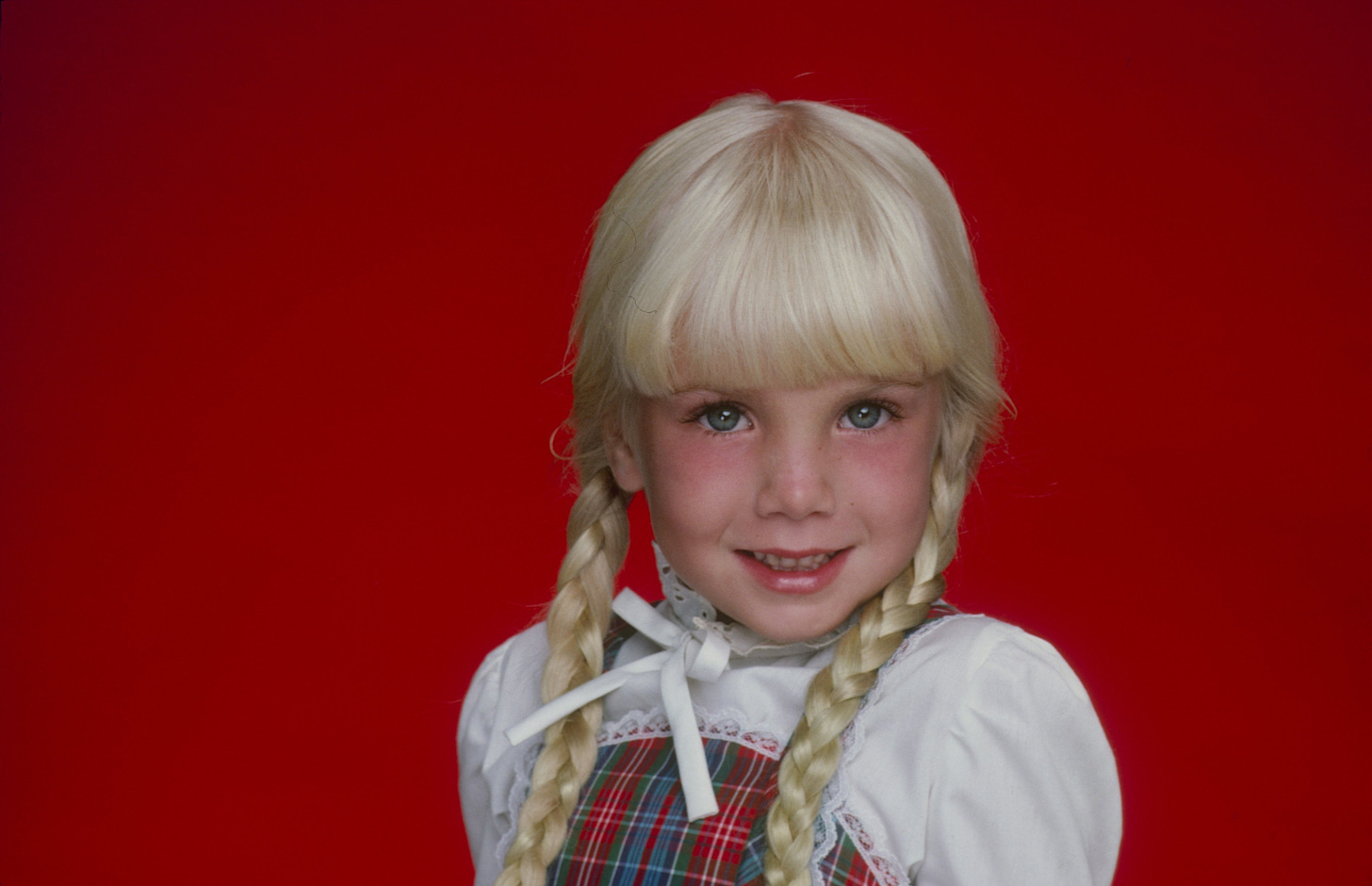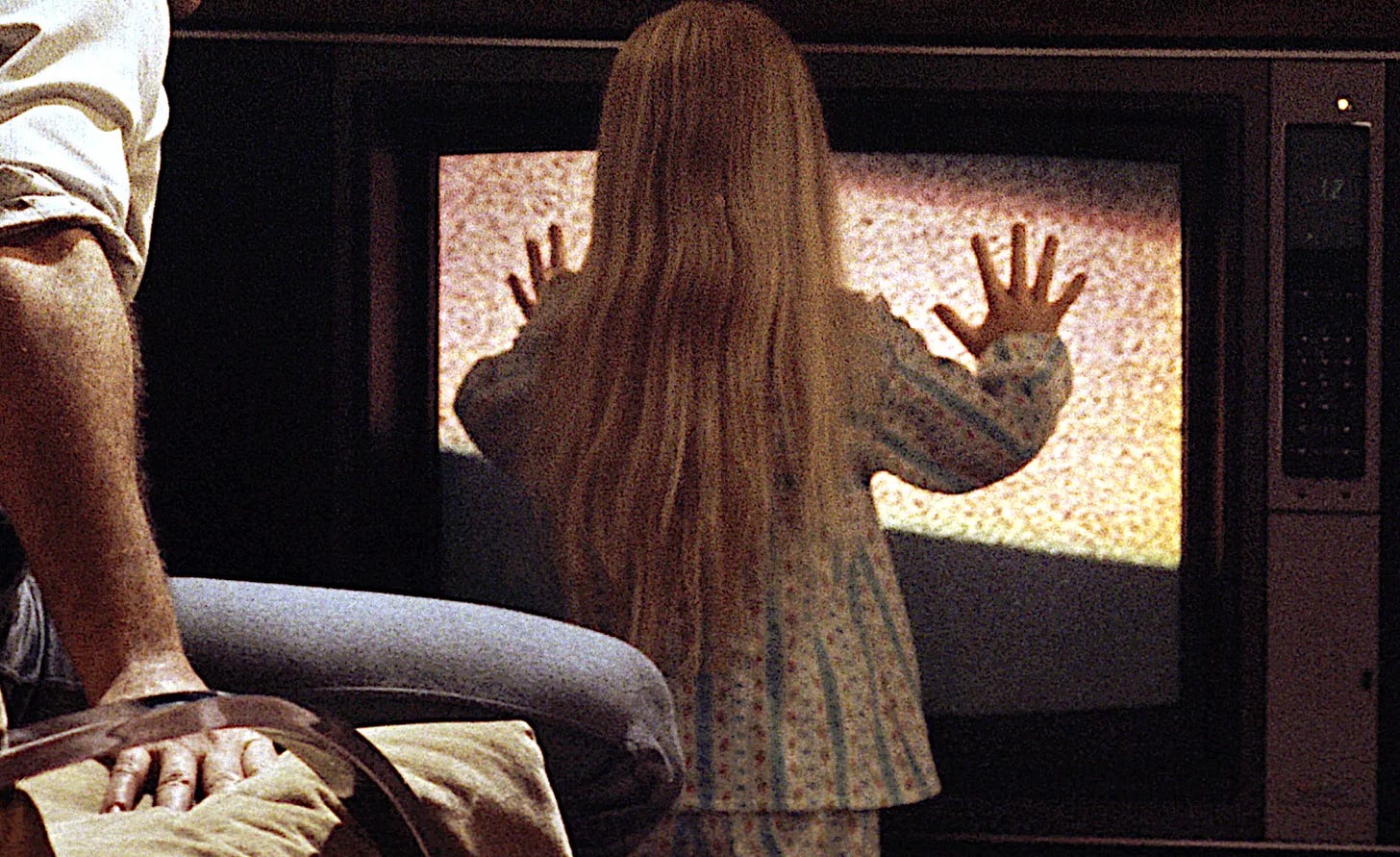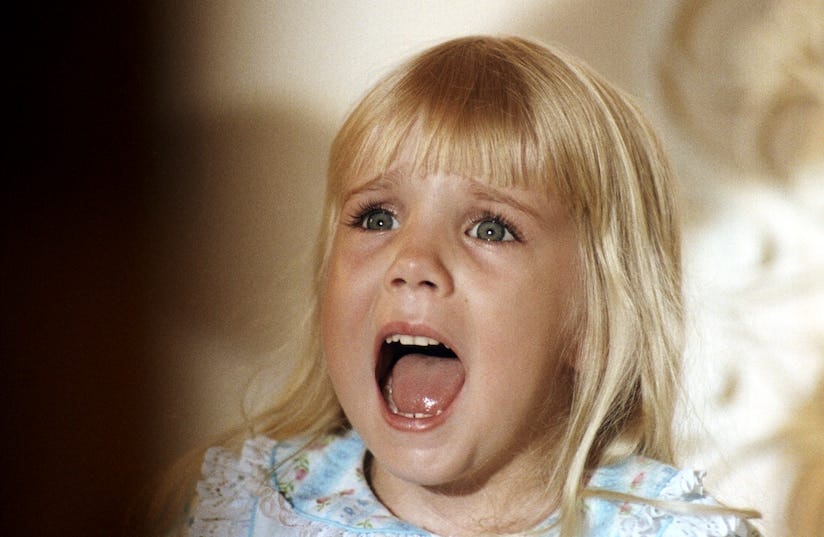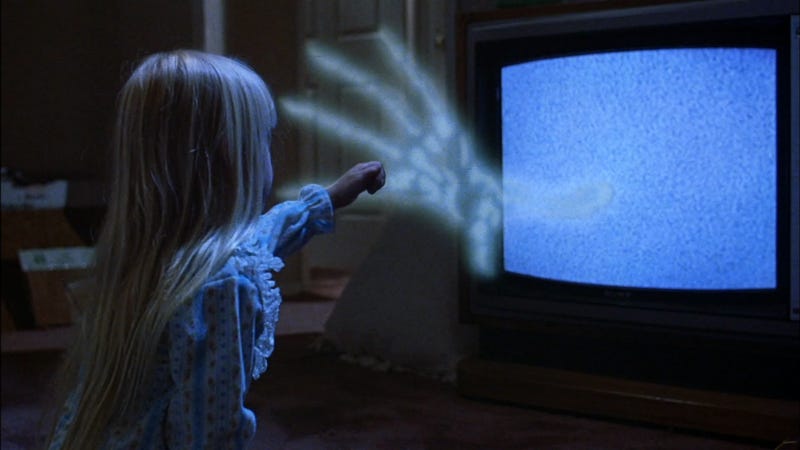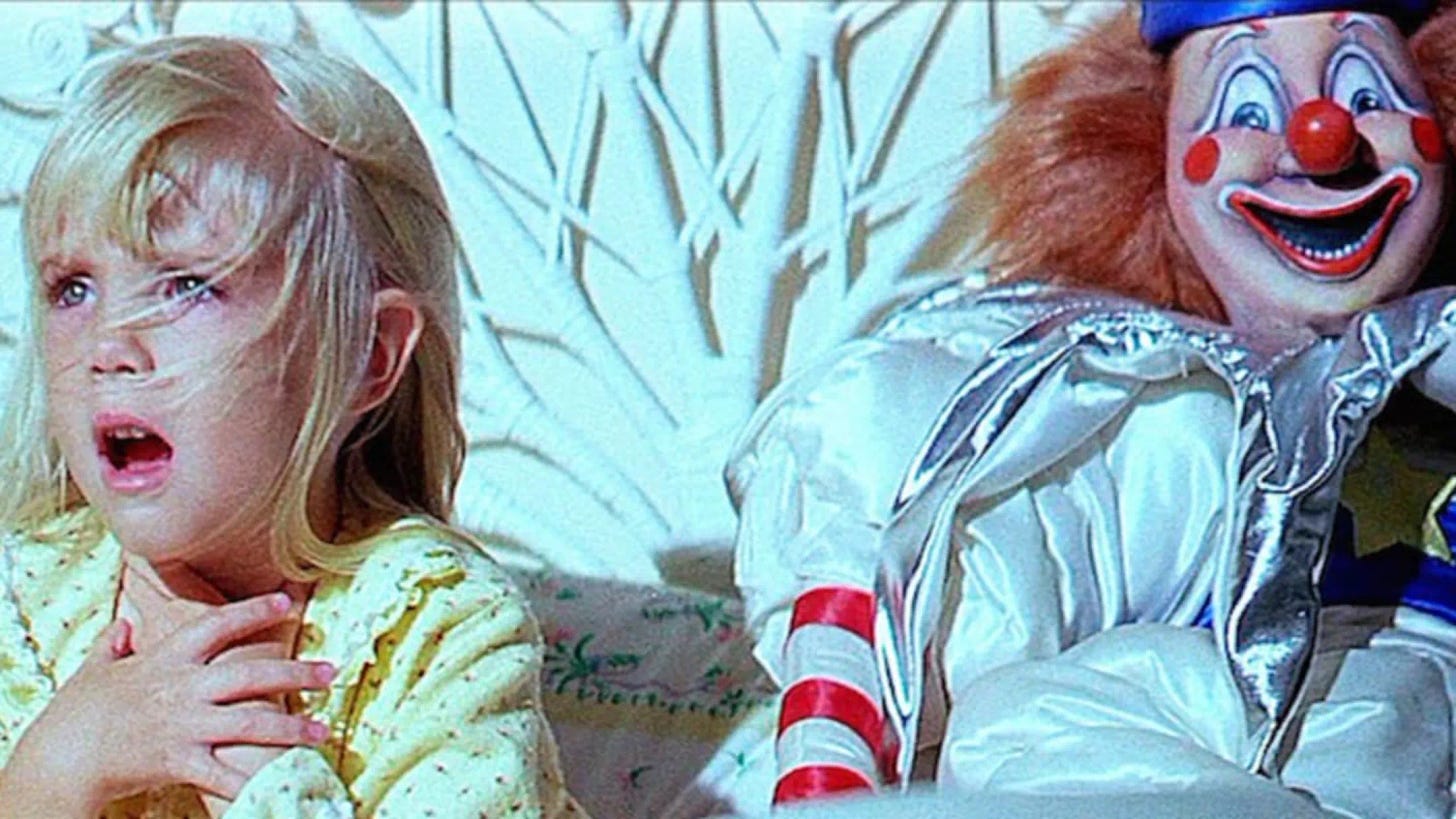Whenever I come across an image of Heather O’Rourke, it sends a sting of nostalgia straight through me. Those cherubic cheeks, framed by ethereal platinum-plaited bangs bluntly chopped over searing blue eyes, it’s a face we all grew up with, engrained in the memory of every kid from the 80s with a knobbed TV set in the living room and a sticker-infested big wheel parked in the garage at dusk.
That visage, haunting as it is now, is an anchored vision of our childhood.
Poltergeist terrified us then, and 40 years later, is just as terrifying to watch. It should probably credited as the gateway to our lasting love of horror flicks.
As screen legend goes, Steven Spielberg initially wanted Stephen King to cowrite the Poltergeist screenplay, but King failed to respond, so Spielberg jumped on board solo.
The movie is regarded as one of the most terrifying horror films of all time but also one of the most "cursed.” Its legacy is shrouded in superstition thanks to a handful of eerie and mysterious cast member deaths. The grim history, plauged by many off-screen horrors, has followed the film through decades. Allegedly even casting fear over the 2015 remake of it.
If you recall, the plot revolves around a suburban family living in a house built on an ancient Native American burial ground and their encounters with the supernatural forces it evokes. Gifted with a connection to the spiritual world, the youngest daughter, Carol Anne (played to perfection by a preschool-aged, sparkly-eyed O'Rourke), is haunted by the malicious spirits buried beneath her home, including a sadistic doomsday cult leader named, “Kane.”
The film debuted on June 4, 1982, and was considered a commercial success, grossing $1.13 million in the United States, making it the highest-grossing horror film of 1982.
Heather O’Rourke was exactly what he was looking for
Spielberg explained in a 1982 interview that he was looking for “a 'beatific' child ... every mother's dream." But after screen-testing a few young actresses, including Drew Barrymore, none were right for the role.
O’Rourke was discovered by Spielberg while eating lunch in the MGM commissary. He apparently spotted her dining with her mom and recalled she made an immediate impression on him. "After lunch," Spielberg said, "I walked over to the table, and I said, 'Who's the proud mother or agent of this child?' And two hands went up — the mother's and the agent's. So I pulled Heather aside, and I think we made her the deal the next day. She's wonderful."
Another young actress Dominique Dunne (niece of Joan Didion) made her film debut in Poltergeist as the elder sister of Carol Anne, but died a violent death shortly after its release. Dunne was brutally strangled by her ex-boyfriend, John Thomas Sweeney, who only served three and a half years for the crime.
Tragically, Poltergeist III would be O’Rourke’s last film.
Several months before filming began, doctors misdiagnosed her with Crohn’s disease.
On January 31, 1988, she collapsed and was rushed to the hospital where, according to the Los Angeles Times, the doctors discovered a longstanding bowel obstruction. An attempt to surgically remove the blockage led to septic shock and she suffered cardiac arrest shortly after.
Heather died in Children's Hospital and Health Center in San Diego on February 1, 1988, at 12 years old. Her death is well-documented because of the medical malpractice lawsuit her parents filed against her doctors for misdiagnosing the condition blamed for her death.
But a 2017 Blind Item on Crazy Days and Nights suggested something more sinister was behind her cause of death
Back in 2017, “Enty” — the anonymous entertainment lawyer behind the Hollywood gossip site Crazy Days and Nights / CDAN (mentioned here several times before) published a highly disturbing scenario in a blind item titled, “Molesters Killed Her,” which was later revealed to be about O’Rourke.
“Heather O'Rourke died in 1988,” the Blind states “the cause of death due to being misdiagnosed with Crohn's and ending up actually having a long-standing bowel obstruction. The parents believed the story the studio executives told them instead of their own daughter.”
As I’ve noted before, I am a long-time follower of the CDAN blog, so I’ve seen many of what initially seemed to be outlandish claims, first posted on Enty’s site, proven true in later years.
This one, however, stuck with me because it was the first major conspiracy I couldn’t talk myself out of or shake. As horrific as it seemed … I believed it. Based on what I’d been reading throughout the years from muted sources and industry rumors that matched the awful details included.
!Unconfirmed! — As for the Steven Spielberg claims, I’m still on the fence there. I offer it as a mid-grade rumor only because a trusted friend of mine revealed to me a couple of years back that her friend of hers (connected to a well-known lawyer and journalist) was working to expose Spielberg, based on several accusations they received about the abuse they suffered as children in the industry.
I have not gotten any detailed updates on the case, but do recall they were pressing Drew Barrymore to come forward about her experiences, which they said she was hesitant to do because of a few (personal) reasons. Again, not confirmed.
Same with Tom Hanks. Rumors and claims I can’t fully support or endorse either.
But let’s examine what we do know.
Enty writes:
“Back in the mid-80’s was peak child molesting time in Hollywood. There was no internet. There were very very few mobile phones. Children came to the set where they were left alone by their parents. For the next 8 hours they were subject to every kind of horrible thing you can imagine. Drugs were commonplace. They were used to try and get the kids to not be so hysterical when being assaulted.
Producers loved casting shows with kids and tweens. If someone pitched a show that involved a handful of tweens with a dozen tween extras per week, it would get a green light. Even if the show was going to suck, and everyone knew it was going to suck, if you got the right pedo at a studio he would say yes just to come for the casting and taping of the pilot. As sad as it is to say, there were a lot of parents who told their kids to go off with the nice man in the suit and do what he says. It was a sick sick time.
It was just past the mid 80’s when a producer came up with the idea of a tween show that not only would feature a rotating cast of extras, but would make the studio a bunch of money because they would film quickly and not hire any adults. Further, the faster they filmed, the more time they would have to molest all the kids that would be hanging around.





